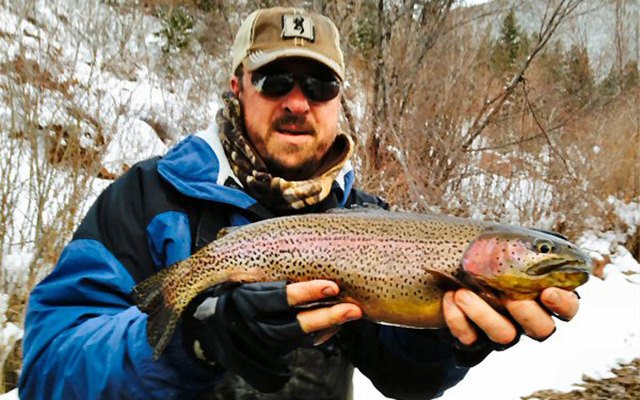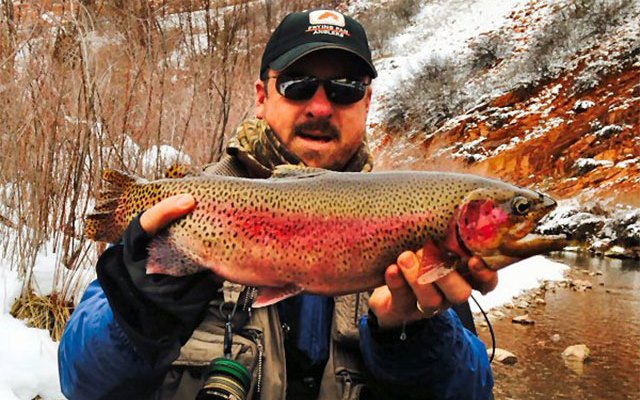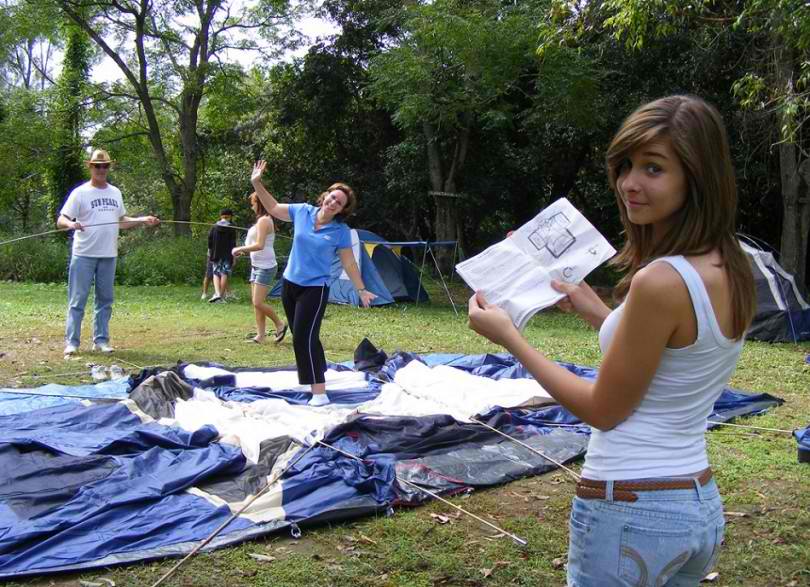
The Frying Pan River near Basalt, Colorado, certainly doesn’t need any introduction to serious trout anglers.
After all, the beautiful tailwater flowing through the red-rock canyon country not far from the Aspen-area ski slopes is home to some of the continent’s best trout fishing.
While the river is certainly not deserted in the month of December, there's no denying that wintertime angling does offer a bit more solace and elbow room for anglers hoping to sample some of the Pan’s epic PhD trout fishing.
Especially when it comes to dry-fly fishing, something that the river is famous for according to Frying Pan Anglers fly shop manager Marty Joseph (Frying Pan Anglers in Basalt, Colo. (www.fryingpananglers.com; (970) 927-3441).
"It's one of the greatest tailwaters in the country," said Joseph. "And it's one of the only rivers in North America where you can fish a dry fly some 365 days out of the year."
Even as jolly old St. Nicholas is warming up his sleight for its annual December 24th Christmas Eve run.
During the month of December leading up the holidays, dry fly fishing on the Frying Pan will primarily revolve around two different kinds of insects.
Earlier in the month, baetis patterns will rule as the river's blue-winged olive (BWO) mayflies hatch sporadically on reasonably mild days when the sun isn't shining too much.
"I was actually fishing in a snowstorm yesterday (during the week prior to Thanksgiving) and the baetis were hatching pretty good," said Joseph. "The baetis hatch fishing can be really good at times if the weather isn't too cold. And yesterday, we actually had pretty good action on both dries and nymphs."
For early month baetis hatches, Joseph advises dry fly enthusiasts to use a #18 to #20 size Hi-Vis Parachute Baetis pattern tied with an olive-colored biot style body along with a orange fluorescent hi-vis post.
If dries aren't working on a cloudy, stormy BWO kind of a day, he suggests using some sort of a blue-winged olive (baetis) nymph or even an egg pattern.
But do keep in mind that there is at least one trick that an angler can try to lure a trout into going after a surface presentation.
"When I'm fishing a dry in the winter, sometimes I'll fish a fly that is a size up from what you might normally use," said Joseph.
Why is that? "Because I want to convince the trout to come up for the meal," he added.
"By over sizing the fly a bit in the winter months, I've often found that is what is necessary at times to get the trout to be willing to rise up, to expend the energy and to come up for a meal."
As the month of December deepens and Old Man Winter's hold on the Colorado high country strengthens, baetis hatches become less frequent notes Joseph. But he also notes that there can still be the occasional hatch on a mild, overcast day.
But as the weather gets colder and snowier, the second bug of note during the last month of the year – midge hatches – begin to become more prominent and take center stage on the Pan.
"For a midge hatch, you want to look for some sunshine, although it doesn't have to be direct sunlight," said Joseph.
"Once the water warms up a bit on any given day, it doesn't have to be much for the midges to start hatching off," he added.
"To know if the trout are active on midges, you want to look for them, either seeing them flash from side to side eating (midges) or when they are actually surfacing. Of course, rising trout are always a good tipoff that the midges are hatching."

Fly angler Brett Graham shows off another healthy Frying Pan River rainbow trout he caught during the winter.
When the midges are coming off on the Frying Pan, the action can literally be spectacular on some memorable days.
"Totally," said Joseph. "Like I said, the Frying Pan is one of the few spots where you can actually fish dries all winter long. The sun is always a nice bonus for the fishermen, although we had a successful day yesterday and there was no sun. But there was a hatch."
When anglers know that midges are hatching and coming off the water, Joseph suggests the following five dry fly patterns: a trailing shuck midge in dark, light and gray colors (sizes #22-30); a CDC adult midge in either black or gray (sizes #22-28); a Griffith's Gnat (sizes #20-24); a CDC spent midge in black (sizes #20-24); or a Parachute midge in either black or cream (sizes #22-32).
When midges aren't coming off the water, Joseph says that midge nymph patterns like a batwing emerger (black, sizes #20-24), a Candy Cane midge (sizes #20-24) or a Gunmetal midge (red in the morning, blue or olive in the afternoon, sizes #20-24) will often be the ticket.
But he cautions anglers to make absolutely certain that midges are not coming off the water before deciding to abandon the dry fly action.
"You want to be absolutely certain that you aren't seeing any midges coming off," said Joseph. "As anglers get older, midges become harder and harder to see. So I always start with a midge dry fly pattern, no matter what."
"When I don't see any bugs at all and I'm certain of that, then I'll try an egg pattern since the browns in the river are spawning at this time of the year," he added.
"And there is also the occasional confused rainbow too (one that is exhibiting spawning behavior) since this is a tailwater and the water temperatures remain pretty constant."
When Joseph uses an egg pattern, he'll opt for either a 6mm bead pattern or a #14-18 fly pattern.
"Whichever one I use, I want the pattern to be in that orange, peach, yellow coloration," said Murphy. "The trout on this river produce eggs that have more of that dark amber, egg yolk type of coloration to them."
Other patterns likely to find their way into Joseph's Frying Pan fly box for a December outing include red Brassies, Discos, various Barr’s patterns, Parachute Adams and even worm patterns in red, brown and other natural hues.
Finally, Joseph reminds anglers coming to the Pan that due to the Mysis Shrimp that come through Ruedi Dam, shrimp patterns are also important on the Pan: "I like to use either blue-eyed or orange-eyed shrimp patterns in sizes ranging from #16 through #22," he said. "Those have been pretty popular lately."
Where should all of these flies be utilized on the Frying Pan River during a December dry fly outing?
"The Pan has some really famous water and most of it fishes well at this time of year," said Joseph. "There's the Toilet Bowl area, the Flats – where there are a lot of fish in the winter months, especially later in the day when the water warms up a bit – the Bend Pool area, the Boulders and Baetis Bridge."
Wherever an angler chooses to focus their December fly fishing efforts, Joseph suggests using the proverbial banker's hours.
"The time of day is important because of the water temperature," he said. "Because of that, I wouldn't worry about getting there around 8 a.m. or anything like that. You want to get there sometime around noon after the water has warmed up a bit.
"Now up in the Toilet Bowl area near the dam, that doesn't really matter since the Mysis Shrimp are always coming out of the dam. But for the rest of the river, later in the day is the key."
The payoff for a day of December fishing on the Frying Pan is some of the best and biggest trout that the Colorado high country can offer up.
"My biggest rainbows in December have been in the 22 to 24-inch long range," said Joseph.
"My biggest brown trout didn't come in December - I caught it in March - but it was 32-inches," he added.
"There are a good number of big fish caught throughout the winter. But the standard sized fish are pretty good too, measuring 16 to 20-inches up near the dam and 12 to 20-inches a bit farther down the river."
All in all, the Frying Pan is one of the state's best gold medal waters and is certainly a prime spot to cast a dry fly, even if the weather is cold and snow is flying in Ski Country USA.
"The Frying Pan is worth taking a day off from the slopes to come experience some great fishing," said Joseph. "If you catch a sunny day or the snow on the mountains is just not that good, take the day off and go fishing."
Because the fishing is almost always pretty good - or even better - on the Frying Pan River.
Even as old St. Nick warms up his sleigh.
Detailed Camping Trip Planning

Some Precautions Important to Take for Arranging Kids Programs


Copyright © www.mycheapnfljerseys.com Outdoor sports All Rights Reserved